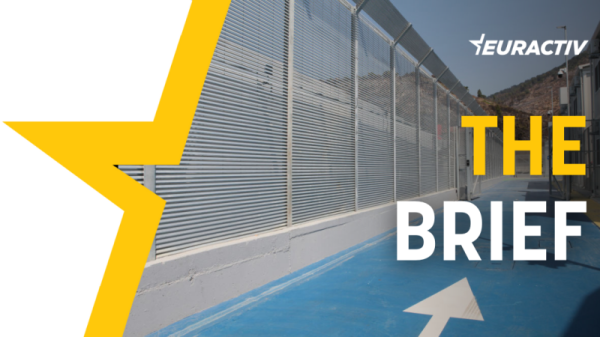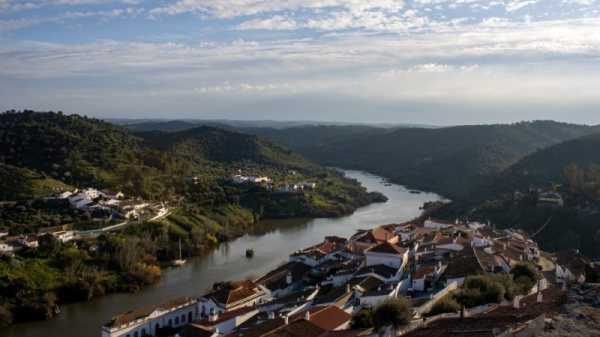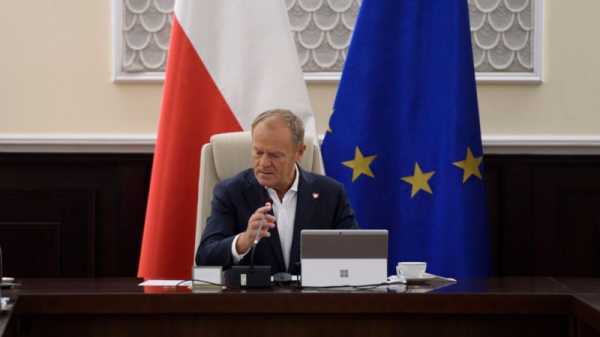
The title sounds like an advertisement for trekking in China. Schengen is a village in Luxembourg, and Shëngjin is a coastal town in Albania, but they do have something in common, besides their exotic names.
One of the EU’s biggest projects, the freedom of movement through the abolition of internal borders, was launched in 1985 in a village situated at the banks of the Moselle River, the border triangle of Luxembourg, Germany and France.
The village where it was signed was so small that it had no proper city hall, and the treaty that led to the creation of Europe’s Schengen Area was signed on a riverboat.
The first signatories were only five countries, the Benelux states: Belgium, Netherlands and Luxembourg, plus France and Germany. The success of the border-free area was so big that the initiative gradually expanded, and in 1995, what had started as an intergovernmental initiative became incorporated as the EU acquis.
But when the member countries, including non-EU members Switzerland, Norway, Iceland and Liechtenstein, were happily removing borders their internal borders and border controls, something unbelievable happened. They forgot about the common external borders!
With hindsight, if resources from the internal borders had moved to external borders and had Frontex become a real EU border guard service (instead of just supporting member states in their efforts to protect external borders), things would have been different.
We faced this reality in 2015 when the European migrant crisis was a period of significantly increased refugee and migrant movements to the continent, namely escaping the Syrian war. An estimated 1.3 million people requested asylum, the most in a single year since World War II.
The current unfolding crisis in the Middle East is a major concern again. EU leaders are gathering today in Brussels to discuss and possibly decide on common measures to address the challenge.
Italy grabbed many headlines with its initiative to outsource the asylum application process, with migrants being identified and fingerprinted at a newly built centre in Albania. Hopefully, the EU will be happy to help.
The idea is the following. The migrants arriving in Italy (many of them reach the island of Lampedusa) will be immediately sent to be identified and fingerprinted at a facility in the port town of Shëngjin, at the Adriatic.
From there, they would be sent 20km inland to a former military base transformed into a migrant camp, where applicants will await the decision of the Italian authorities, which should not take too long. If they are granted asylum, they will be taken to Italy. If their application is rejected, they will be sent back to their country of origin.
Just before today’s summit, the first 16 migrants arrived in Shëngjin. Although it is too early to judge its efficiency, the Italian initiative has been a publicity stunt for the country’s prime minister, Giorgia Meloni. In the absence of any good answers to the threat of uncontrolled migration, it seems bad answers are most welcome.
If one asks diplomats from the other countries receiving the bulk of the migrants attempting to cross the Mediterranean, they are not happy with the Italian initiative. If migrants (or rather, the traffickers of human beings who organise the crossings) are discouraged from taking the Italian route, they could choose the islands of Greece and Spain. The decrease in arrivals in Italy could be matched by an increase in Spain and Greece. It is as simple as that.
An EU solution would be better than a national initiative. Outsourcing migration is not something new for the EU. It has had controversial experiences with Libya and Tunisia and a substantial deal with Turkey. But the country’s capacity to receive more migrants is also reaching its limits.
The ageing EU needs migrants for its economy. Even Meloni, who is the leader of a far-right party, has ensured 400,000 undocumented migrants received papers to work legally instead of being exploited by mafias.
However, the EU still needs to know who the people who are knocking at its doors are.
The proper answer appears to be strengthening the EU’s external borders, promoting Frontex into a full-fledged EU border guard service, and putting in place mechanisms for accepting migrants who file their applications in a dignified way, instead of breaking through fences.
As a new EU executive takes over, this should be one of its priorities. In terms of EU policies, Schengen continues to be the correct answer. But Shëngjin should be the name of a tourist destination, not of a migration “hotspot.”
The Roundup
Read our latest news on today’s European Council summit meeting
EU leaders will meet in Brussels on Thursday (17 October) for tense and difficult talks on the bloc’s management of migration.
The heads of government from Denmark, Finland and Sweden told the press before a European Council summit meeting on Thursday (17 October), that they backed Polish plans to close access to asylum seekers in case of increased pressure on the border with Belarus.
EU leaders to discuss Ukraine ‘victory plan’ with Zelenskyy amid worries of negotiation push, they are also expected to discuss the EU’s €35 billion loan to Ukraine and “winterisation efforts.”
In other news
EU Politics Decoded: Ursula home alone: member state requests lie in limbo.
According to a draft seen by Euractiv, the EU executive will allow member states to use unspent rural development funds to support farmers, forest owners and SMEs in the food processing industry affected by extreme weather events.
Some 80% of toys sold by third-party sellers on online marketplaces do not meet EU safety standards, according to Toys Industry Europe (TIE), following the publication of a study on Thursday (17 October).
A draft statement by centre-right EU leaders on political priorities to tackle irregular immigration reveals Poland’s previous opposition to implementing the EU’s Migration Pact is appearing to soften.
As European Union leaders held their first summit with their Gulf counterparts on Wednesday (16 October), both sides agreed to revive long-stalled trade talks, but disagreements on how to word it prevailed.
The Romanian government approved the creation of a state-run railway company to meet the country’s defence needs on Wednesday, bringing the country in line with the EU’s new military mobility initiative.
Look out for
The Hungarian Presidency of the Council of the EU will organise in Budapest, Hungary, a conference on ‘Shared responsibility, cooperation between the state and religious communities in Europe’.
EPC organises in Brussels, Belgium, a hybrid conference on ‘Assessing state-level resilience in a changing environment’.
EU foreign policy chief Josep Borrell participates in the G7 Ministerial meeting on defence in Naples, Italy.
EU ministers meet for an informal meeting of trade ministers, in Budapest, Hungary.
European Commission Valdis Dombrovskis visits Latvia.
[Edited by Rajnish Singh]
Source: euractiv.com



